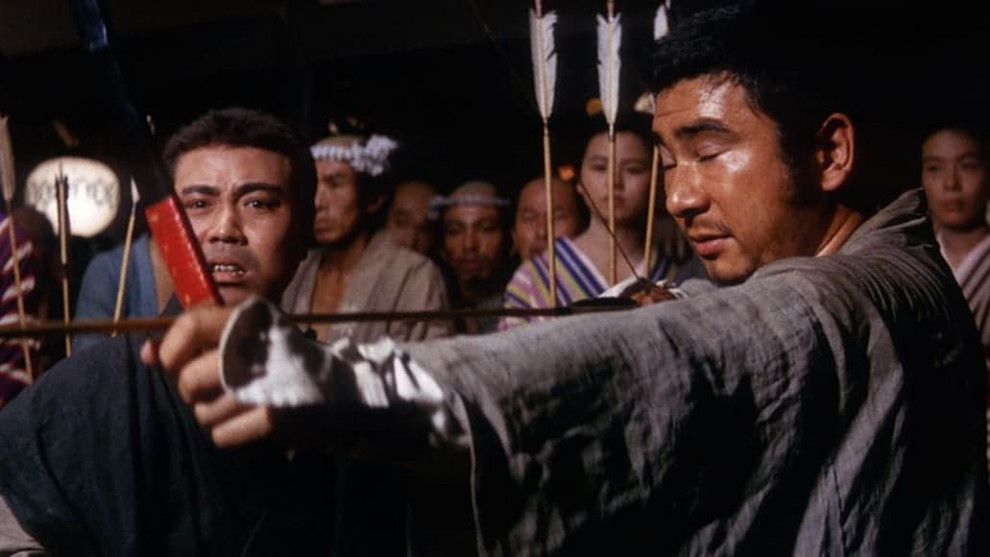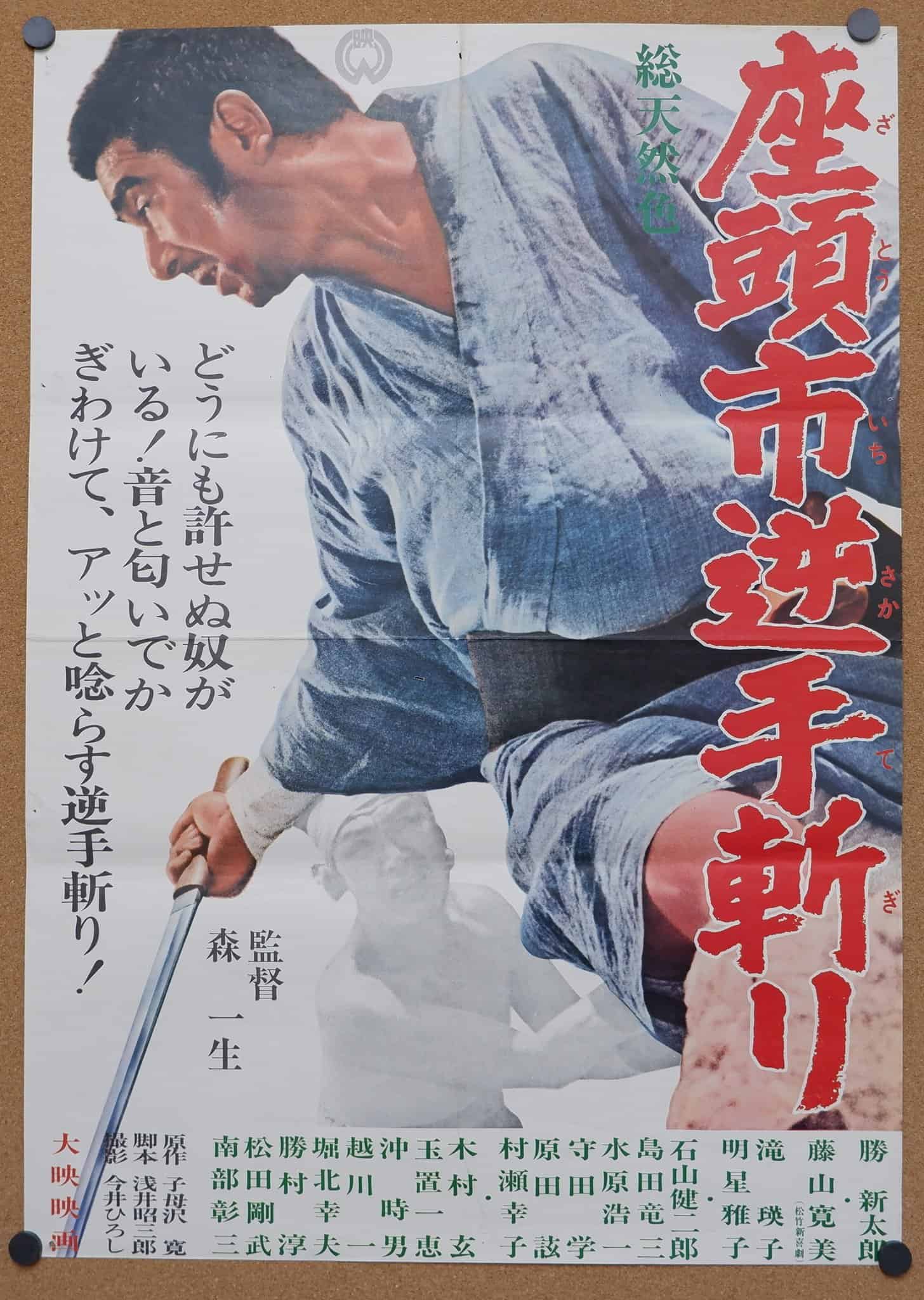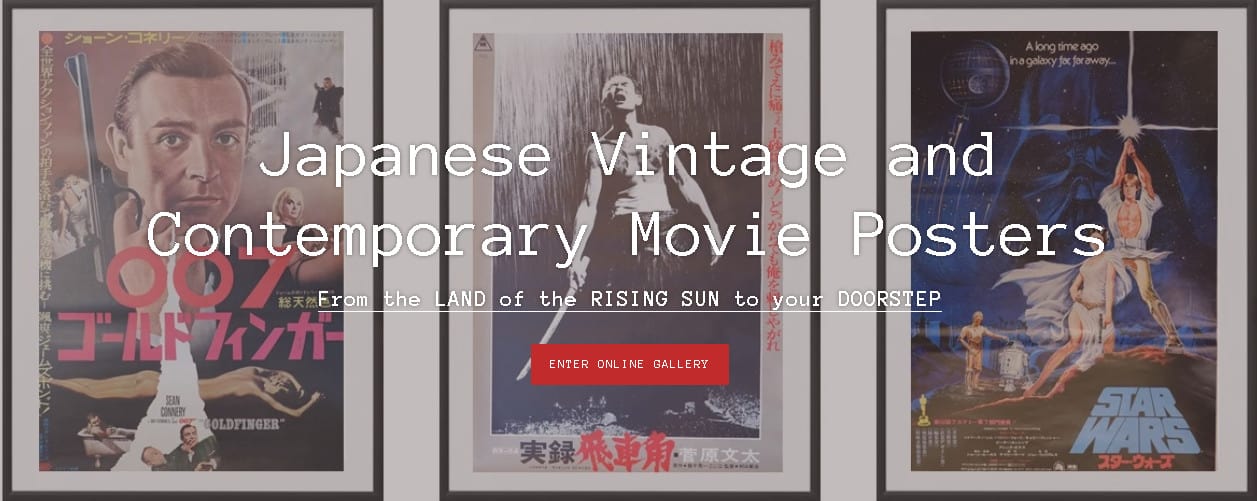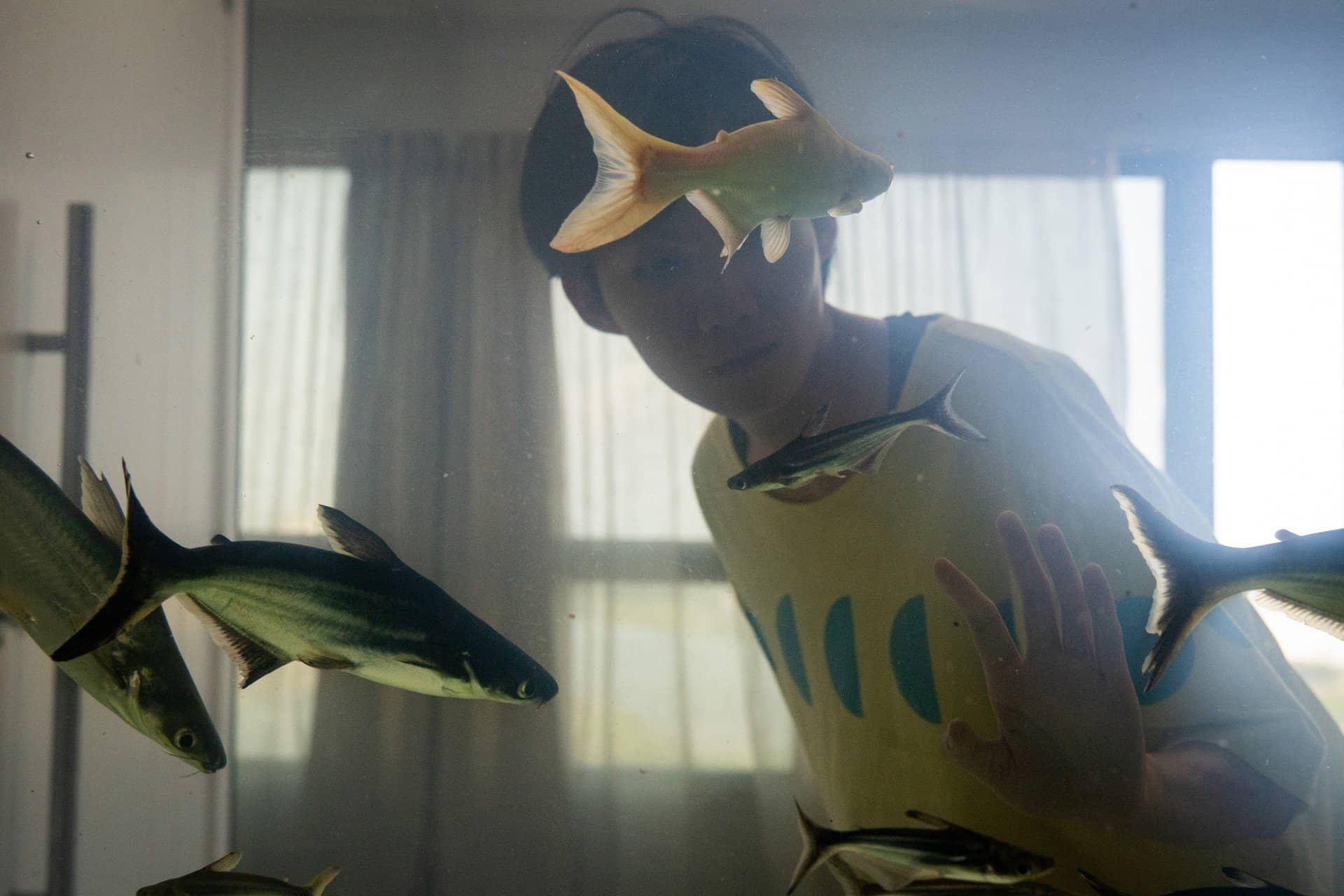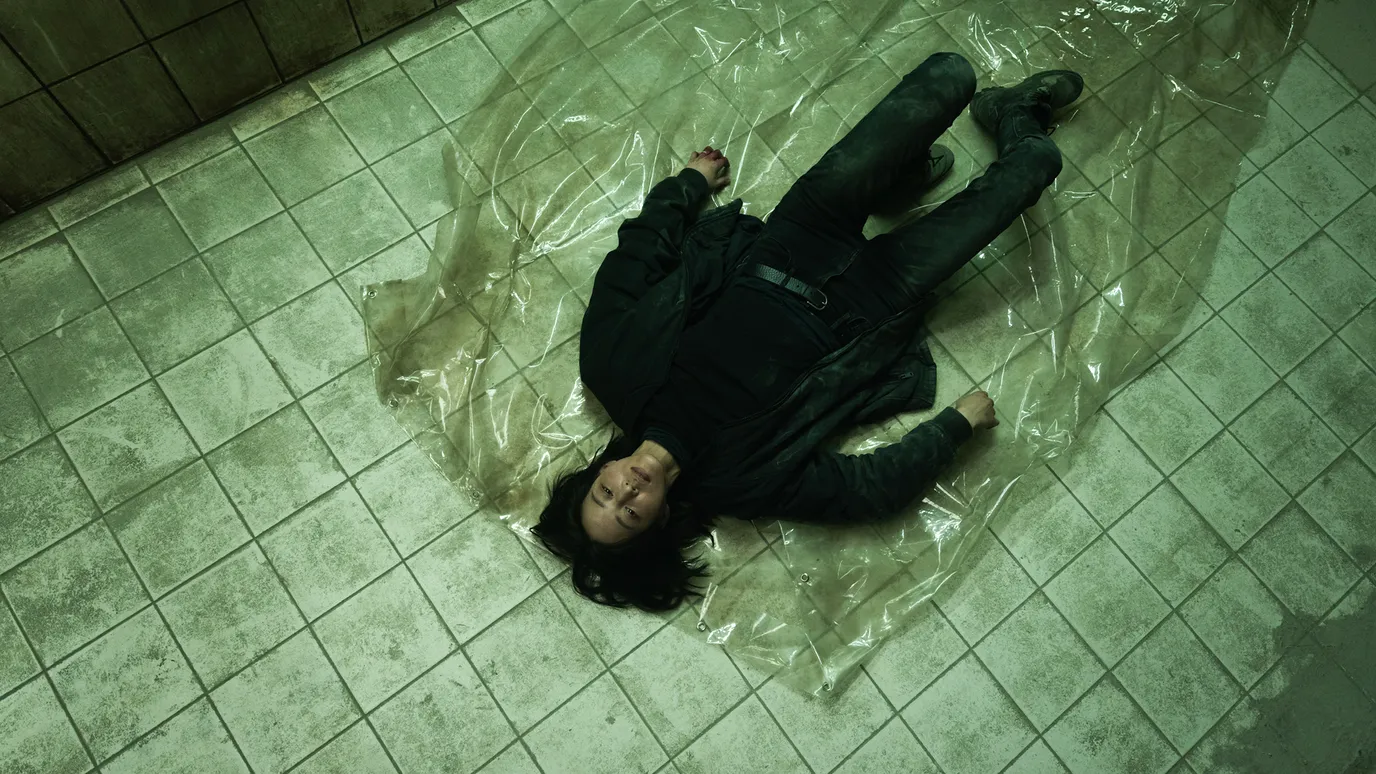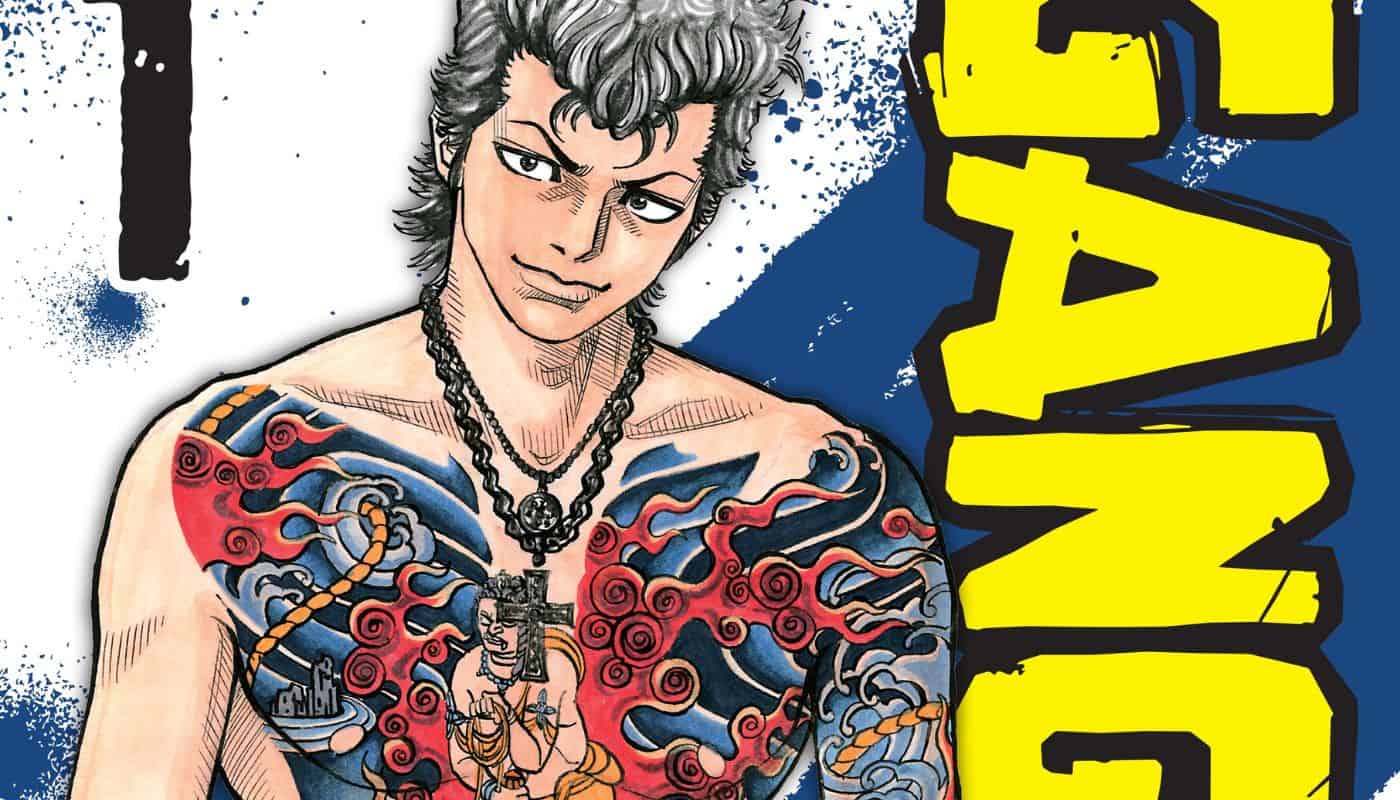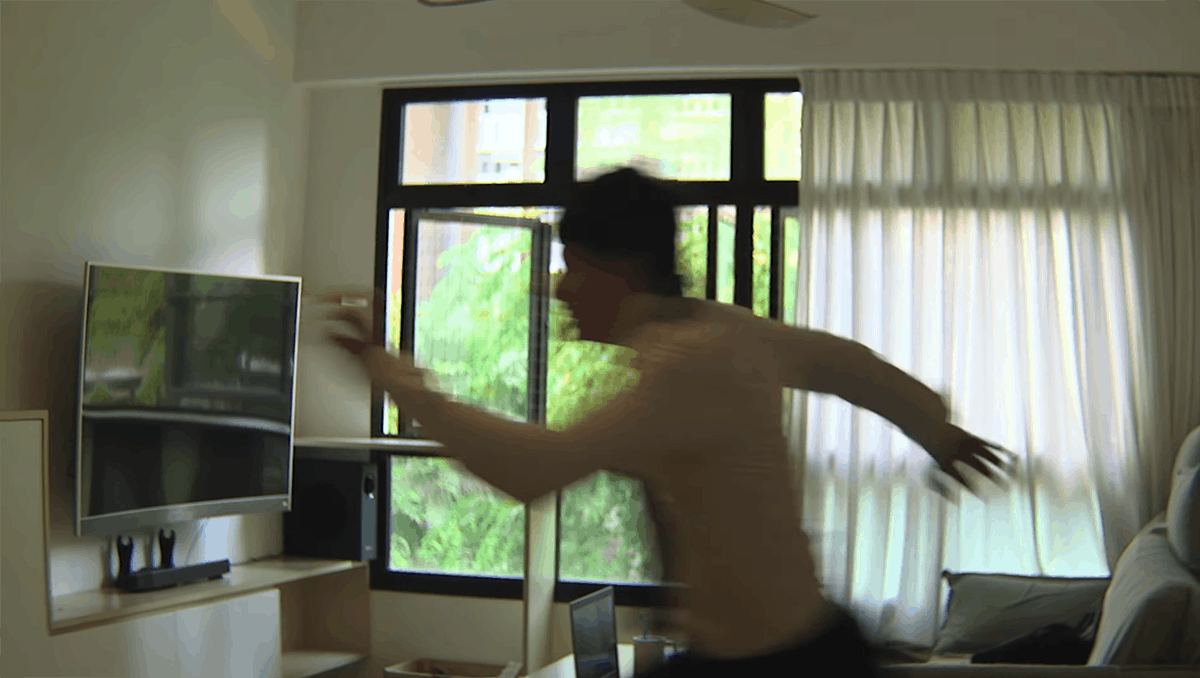After his interesting but rushed second entry into the popular “Zatoichi”-franchise, Japanese director Kazuo Mori would return to the tales of the blind swordsman with the eleventh feature “Zatoichi and the Doomed Man”. With the studio obviously treating the subject matter quite differently than when Mori was assigned to do “The Tale of Zatoichi Continues” and the support of an experienced cast and crew, his second venture into the world of Zatoichi feels richer and takes its time, following a familiar structure while also exploring issues of fate, determination and, as the title already indicates, doom.
Buy The Original Poster from Japan Poster
During a brief time in jail for illegal gambling, Zatoichi (Shintaro Katsu) meets another prisoner named Shimazo (Keichi Mizuhara), who is about to be executed for a murder which he did not commit, according to his own account. In his desperation, he begs Zatoichi to meet his family and find the boss of a yakuza gang in order to clear his name. However, as the blind masseur is back on the road, he decides against doing the favor, especially since he is still skeptical about Shimazo's story.
While on the journey through the next town, he meets Hyakutaro (Kanbi Fujiyama), who is impressed with the blind man's skill with bow and arrow, and wants to accompany him on his path, but leaves him the first chance he has. As Zatoichi follows Hyakutaro's traces, by chance he arrives at the town Shimazo told him about and encounters the yakuza boss, who has just been visited by Hyakutaro, who goes by the name of Zatoichi now, exploiting the chance for free drink and accommodation. Coincidentally, Zatoichi not only uncovers the disguised Hyakutaro, but also the scheme for which Shimazo might had to pay the price. Eventually Zatoichi decides to help him and his family.
Considering the series enters its eleventh entry, it is safe to say the formula of the “Zatoichi”-films has been done to death, with the only entries worth mentioning being the ones who manage to actually add something worthwhile to the story of the blind swordsman, a different take or perspective. In that regard, putting the focus on ideas of fate, coincidence and inevitability is quite clever, especially in the way Shozaburo Asai's script handles these notions. Through most of the movies starring Shintaru Katsu's famous character it had always seemed Zatoichi literally stumbles upon his next adventure or that the violence he has spread has come back to haunt him. There is a growing frustration and even exhaustion within the character who even states he “always gets into trouble”, believing he can actually avoid it this time.
Additionally, these concepts are reflected in the images of the film, some of which contain symbols and metaphors that may even constitute a red thread throughout the whole series. Whereas Zatoichi relishes the sun at the beginning of “Adventures of Zatoichi” or “Zatoichi's Revenge”, the recurring image of dried up soil, the sweaty costumes of the characters and the idea of exhaustion in “Zatoichi and the Doomed Man” contradict the reading of the sun as a metaphor for freedom, peace or tranquility, a state which needs to be reinstated at the end of the film. In this case, it supports the idea of Zatoichi eventually marching to his own demise or doom, an idea he seems to contemplate when standing on a desolate shore listening to the ocean, the everlasting symbol for the hereafter.
Consequently, the concept of coincidence is a common thread in Asai's script, even though not every revelation feels that organic. Besides another solid performance by Katsu as the lead character, we need to mention the performance by Kanbi Fujiyama as Hyakutaro. Although he seems little more than the bringer of comic relief, his character can also be seen in the context of inevitability and fate, especially when he is asked to face what he has achieved so far, playing tricks and inventing schemes or disguises.
Buy This Title

“Zatoichi and the Doomed Man” is a solid entry into the “Zatoichi”-franchise with some interesting ideas implemented in a somewhat predictable plot. Apart from the ingredients which have become trademarks of the series, the idea of fate and inevitability add a layer to the character, questioning whether he is capable of avoiding trouble and violence and, most importantly, whether the freedom he thinks he enjoys is actually an illusion.


